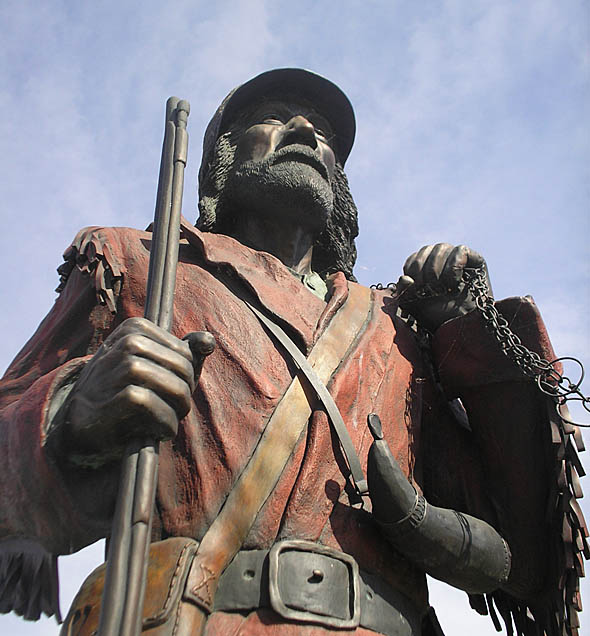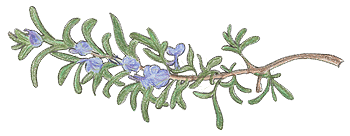Pierre Bottineau Monument
County: Bottineau County, North Dakota
Location: 314 5th Street W, Bottineau, ND (on the courthouse square)

Coordinates: N48o06.963' W100o26.976'
It doesn't seem Pierre Bottineau, the entrepreneurial Métis for whom Bottineau, North Dakota, is named, ever had anything to do with the city or county of that name. Nevertheless, Pierre Bottineau does now reside in the city and county of Bottineau--in bronze, as a statue alongside the courthouse.
Pierre Bottineau is indeed a historic figure on the northern plains. Born near the present location of Grand Forks on the first day of the year 1817, Pierre Bottineau lived his life as a man of the border. He was Métis, with a father of French lineage and a mother who was Ojibwe. After working for the Hudson Bay Company as young man, he developed a close relationship with the US Army, guiding forces out of Fort Snelling, acting as an interpreter of several Indian languages. He guided the Pacific railway survey across Dakota Territory in 1853.
Bottineau was an early settler and investor in Minneapolis and the founder of several Minnesota towns. In 1862, when the Dakota laid siege to Fort Abercrombie, it was Bottineau who slipped away and brought forces from Sauk Center to relieve the siege. Pierre Bottineau lived the latter years of his life in Red Lake Falls, a town he founded in 1876. He died while on a moose hunt in 1895, to be eulogized by newspapers across the region.
Bottineau's memory, though, is a little ambiguous, because he was a man of the border. Whites valued his services, but never fully accepted him, because he was a mixed-blood. And much of what he did for the military and for developers worked against the interests of Indian landholders.
Still, there came a time late in the 20th century when citizens of Bottineau, seeking to spruce up the courthouse grounds, wanted some public art. They liked the statue of Leif Erikson done for Minot's Scandinavian Heritage Park by local sculptor Arlen Evensen, and so they commissioned him to cast a likeness of the man for whom Bottineau County was named.
The statue of Bottineau thus erected in 1998 stands seven feet tall atop a granite pedestal. At the dedication ceremony Professor Virgil Benoit of the University of North Dakota urged those attending to "continue to unveil" Bottineau's "complexity and interesting history" and to "never bury the monument." Bottineau, Benoit was intimating, was worthy of memorial and of contemplation even if he hadn't had anything to do specifically with the community that erected a statue of him.--Research by Karl Larson, HIST 489, 2010
Recommended Reading
Bray, Martha. "Pierre Bottineau, Professional Guide," North Dakota Quarterly 32 (1964): 29-37.
Burr, A.G. "The Organization of Bottineau County," North Dakota Historical Quarterly 9 (October 1941): 3-20.
Johnson, Kenneth E., and Waiva Bergeron. "The Story of Pierre Bottineau." Compilation of notes and articles, n.d. Bottineau County Historical Society Museum, Bottineau.
Pierre Bottineau (family website) / Pierre Bottineau (Red Lake County Historical society)
| Photo Gallery |
 |
 |
 |
 |
 |
 |
 |
|---|
 |
 |
 |
Photos by Karl Larson |
|---|
Want to talk about this monument, or other heritage sites on the northern plains? Join the discussion on Facebook. Check out the center's Facebook group, Heritage Trails.
 Remembrance in Stone / Center for Heritage Renewal
Remembrance in Stone / Center for Heritage Renewal